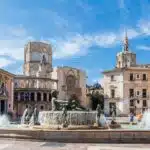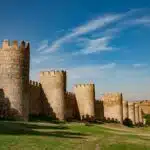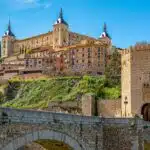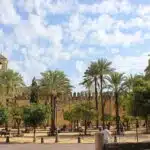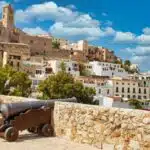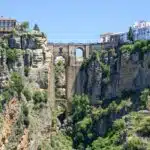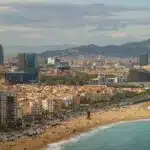Santiago de Compostela, located in the Galicia region of northwest Spain, is a city steeped in history, culture, and spiritual significance. Known as the final destination of the world-famous Camino de Santiago pilgrimage, this UNESCO World Heritage Site has been drawing travelers, pilgrims, and history enthusiasts for centuries. Whether you’re walking the Camino or simply visiting to soak in its atmosphere, Santiago de Compostela offers an unforgettable journey through Spain’s past and present.
The Majestic Cathedral of Santiago de Compostela
At the heart of the city lies the awe-inspiring Cathedral of Santiago de Compostela, one of the most important religious landmarks in Europe. This magnificent cathedral is believed to house the remains of Saint James the Apostle, making it a significant pilgrimage site for Christians. The Romanesque, Gothic, and Baroque architectural styles come together to create an imposing yet beautiful structure that dominates the city’s skyline.
Visitors can marvel at the grand facade of the Obradoiro square, explore the crypt where St. James’ relics are kept, and witness the famous Botafumeiro, a giant incense burner that swings through the cathedral during special masses. Whether you’re religious or not, the sense of history and grandeur within the cathedral is awe-inspiring.
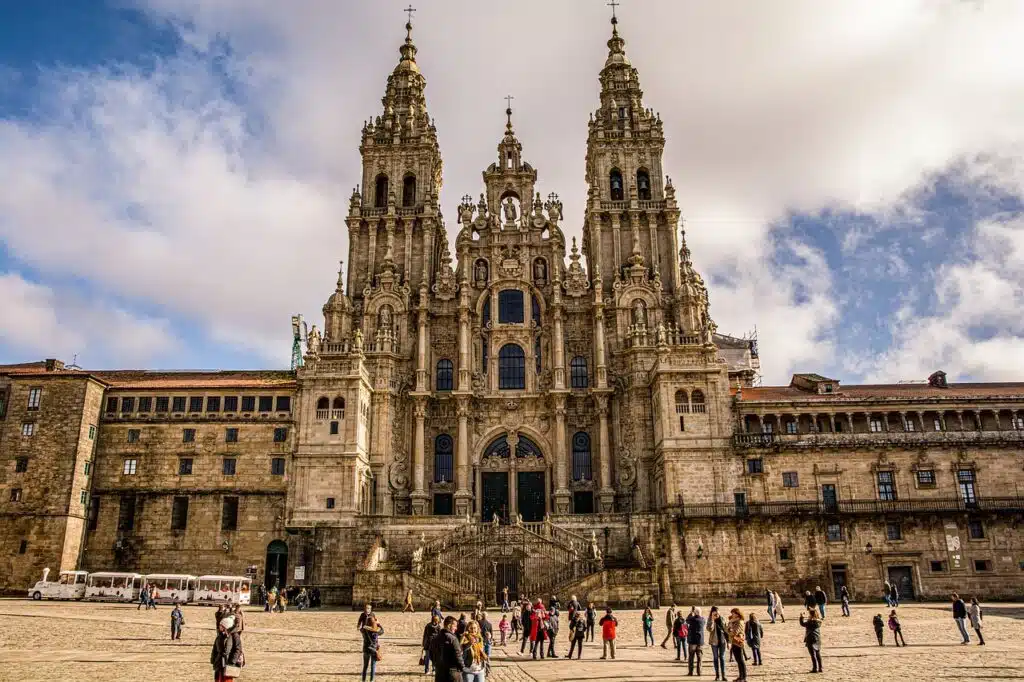
The Camino de Santiago
Santiago de Compostela is synonymous with the Camino de Santiago, or the Way of St. James, a network of pilgrimage routes that stretch across Europe. For many, completing the Camino is a life-changing experience, with the city being the rewarding final destination. Pilgrims from all walks of life, carrying backpacks and walking sticks, arrive at the Praza do Obradoiro in front of the cathedral after walking hundreds of kilometers, often overwhelmed with emotion at reaching their goal.

For non-pilgrims, the Camino offers a chance to explore Spain’s rich landscapes and local cultures through a series of hiking routes, with Santiago as the crowning reward at the end of the journey.
Historic Old Town
Santiago de Compostela’s Old Town, a labyrinth of narrow, cobblestone streets lined with medieval buildings, is a UNESCO World Heritage Site in its own right. The streets are filled with charming shops, cafes, and restaurants where visitors can savor local Galician cuisine, including fresh seafood, empanadas, and the famous Tarta de Santiago (St. James Cake).

Wander through the arcaded streets of Rúa do Franco, visit the Monastery of San Martín Pinario, and relax in one of the city’s many public squares, such as Plaza de Quintana or Plaza de Cervantes. The historic atmosphere makes every corner of this city feel like a step back in time.
Cultural Heritage and Festivals
Santiago de Compostela is not just a religious hub but also a cultural one. The city hosts numerous festivals and events throughout the year, with the most important being the Feast of St. James on July 25th. This festival celebrates the city’s patron saint with religious processions, fireworks, and traditional Galician music and dancing. The city also offers a variety of museums, including the Museum of the Galician People and the Museum of Pilgrimage and Santiago, which provide insights into the region’s rich history and culture.
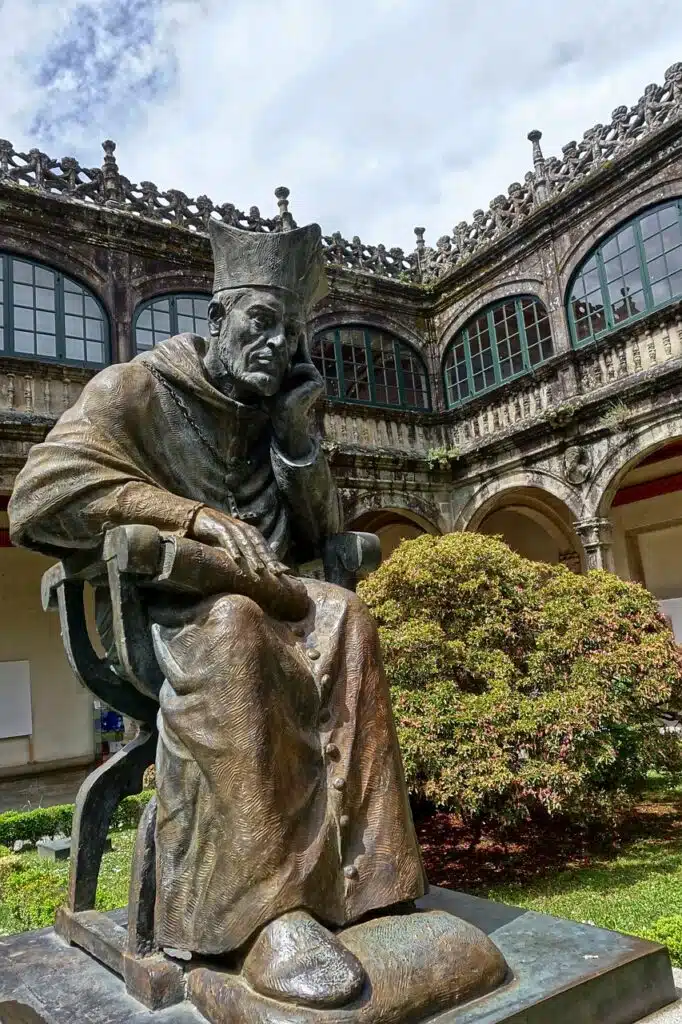
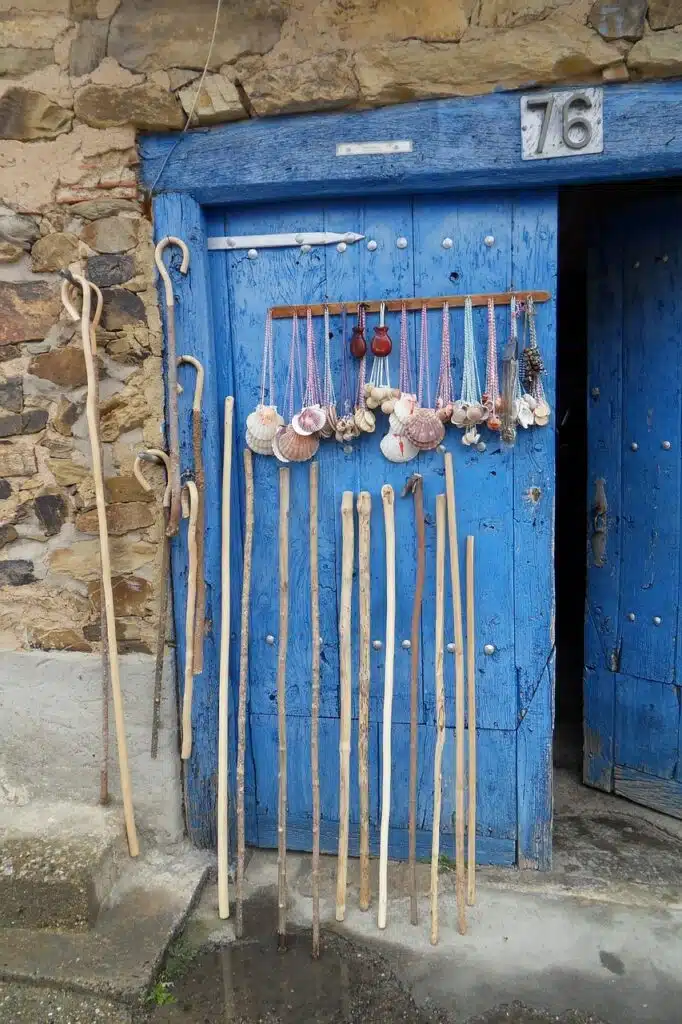
Exploring Santiago de Compostela and the green landscapes of Galicia
Santiago de Compostela is the perfect base for exploring the lush, green landscapes of Galicia. The region’s rugged coastline, dotted with stunning cliffs and fishing villages, is a must-see. A short drive from the city will take you to the famous Rías Baixas, where you can taste some of Spain’s best seafood and Albariño wine.
A City of Reflection and Discovery
Santiago de Compostela is a place of reflection, cultural discovery, and spiritual significance. Whether you’re a pilgrim or a traveler looking to delve into Spain’s historical and religious heritage, Santiago offers a unique and unforgettable experience, surrounded by the mystical allure of the Camino and the architectural grandeur of its famed cathedral.



